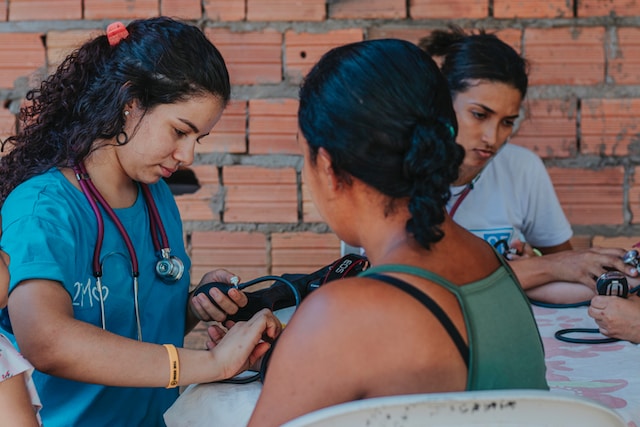In the fast-paced, demanding field of healthcare education, nurse uniforms demonstrate respect and uniqueness. The motifs of these clothes have more significance than their appearance. National influences, historical standards, and personal preferences have changed nurses’ colors and insignia. Our article describes how caregivers’ uniform shades and symbols promote patient teamwork and health. Understanding how these aesthetic components work helps us comprehend healthcare’s complicated dynamics and how important well-designed caregivers’ apparel is at school or anywhere else. So, let’s jump into it together!
Different Colors and Symbols on Nurses’ Outfits
When it comes to nurse attire, used symbols have influential meanings. Each color and sign means something unique. And both regular people and healthcare workers can learn important things from them. Let’s see more about what these parts of the nursing suit mean. First, tones are critical for setting the mood in a healthcare place. We’ll take a look at some examples and their meanings.
- White is often considered a clean and pure color. It shows how hard nurses work to keep the place where they care for patients clean.
- Under the bright lights of an operating room, green and blue may be easier on the eyes, but they still show marks. They have a calming effect just by being there, and the color green has been associated with medicine for a long time.
- Black is a great choice for scrubs since it easily hides stains and still seems put together, even if your well-loved pair has seen better days.
Where Could Medical Workers Learn More About Their Outfits?
Nurses might need assistance summarizing all the necessary skills while studying. And that’s where an essay service will come in handy. Each student needs to finish a so-called capstone project, which you may find at https://nursingpaper.org/capstone-project-help/, and be ready for life after college. Like any other big job, this one requires a lot of time and effort for study, analysis, and gathering data. Moreover, it is a sign of reliability and efficiency, which gives people confidence.

https://unsplash.com/photos/l0j0DHVWcIE
The Reasons Why You Should Utilize Colors
Putting symbols on nursing ensembles should help both them and the patients in many ways. First of all, they may affect a person’s mind, changing their mood and feelings. And that’s a valuable lesson for each medical worker. By wearing calming colors like blues and greens at the university or a job, nurses should make the surroundings more relaxed and comfortable for their patients. It helps lower worry and stress, usually leading to better patient results.
On the other hand, symbols serve as visual clues which tell clients and their families important things. For example, a sign that shows a nurse’s skill or job could make it easy for sick people to know who is in charge of their care. This not only helps people talk to each other better, but it also makes patients happier by ensuring they feel well-informed throughout their healthcare path.
Furthermore, using colors and symbols on nurses’ outfits could help them feel like a team and give them a sense of identity. Uniforms with the same designs emphasize teamwork and responsibility. And it is excellent for classes, for instance. The use of symbols in nursing attire also helps them stand out from other hospital workers and visitors.
Challenges Medical Workers Face Regarding Their Outfit
Putting colors and symbols on nursing outfits might be a strong way to send important messages. Every single teacher will try to explain the same thing. But it does not come without problems. One of the greatest challenges is ensuring everyone understands and knows the colors and images used. Nurses work in many healthcare settings, and some of them are:
- Hospital.
- Research centers.
- Cruise ships.
- Military.
- Private residences.
Another difficulty is ensuring that all healthcare groups do the same things. Each hospital or center might have its own tones and images showing what it stands for. This can make things hard for nurses who work at a lot of places or for staffing agencies.

https://unsplash.com/photos/7-fAqdVcbAw
Conclusion
In the healthcare niche, the colors and patterns of nurses’ outfits are crucial. These artifacts display the field and communicate essential signals to patients, colleagues, and the public. Caregivers will surely describe their professions, skills, and patient care by understanding what symbols signify. Adding them to clothes improves cooperation, respect, and patient experience. Putting colors on nurses’ uniforms may cause problems, like making sure they’re the same across healthcare companies.

















